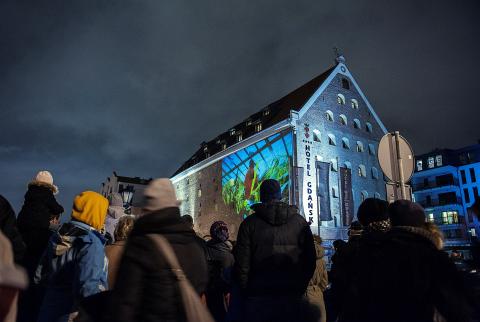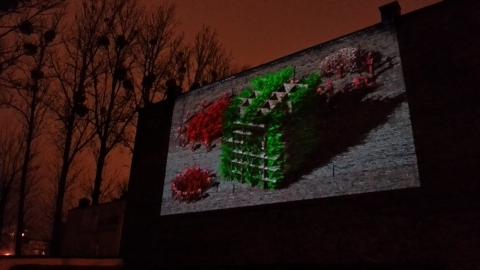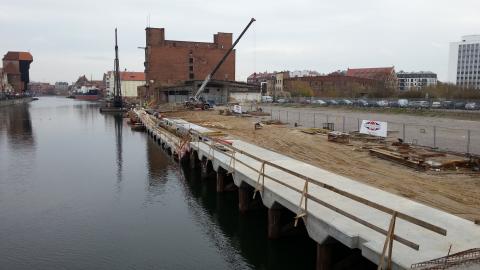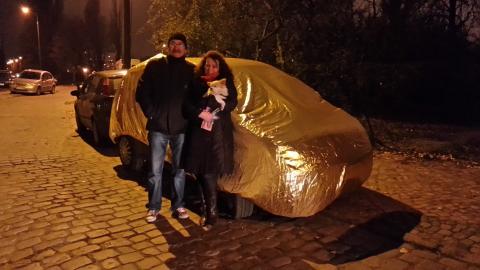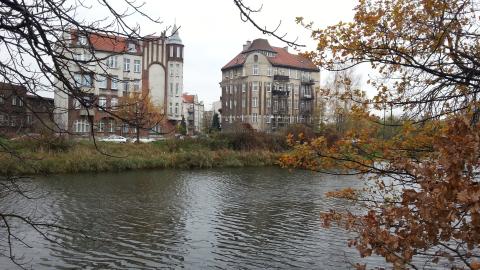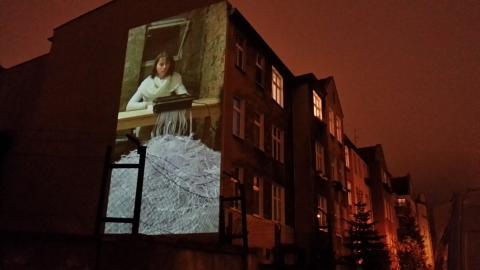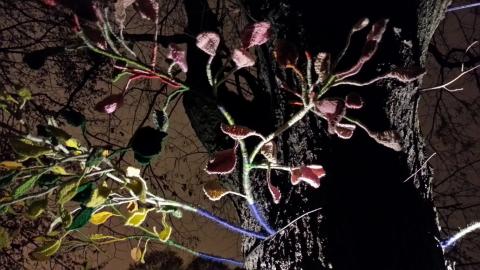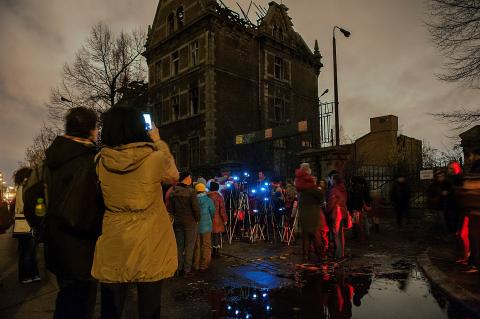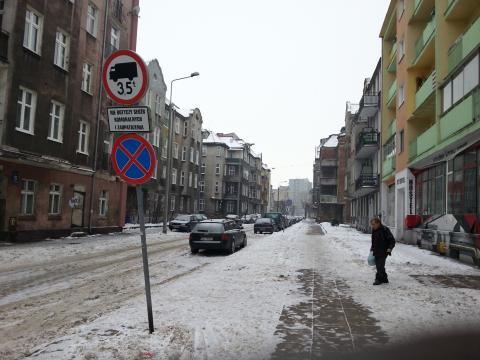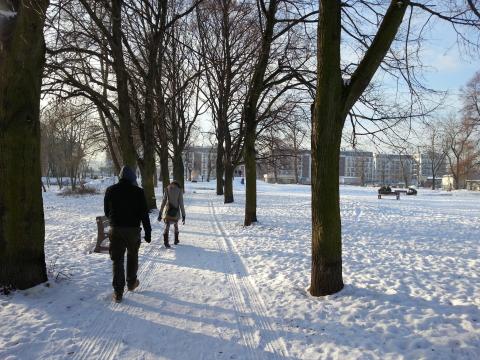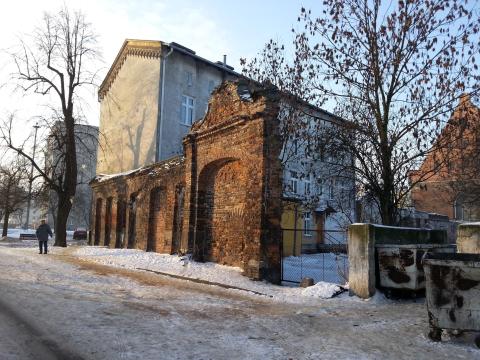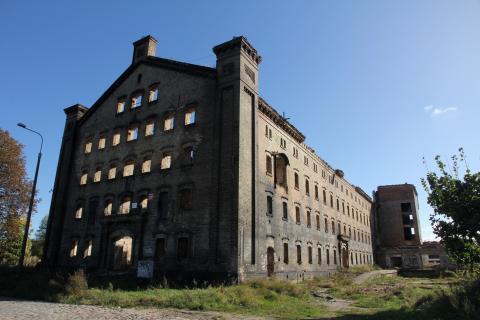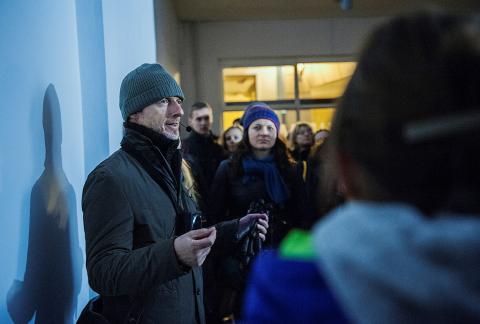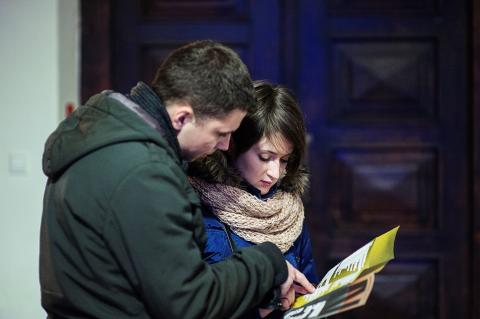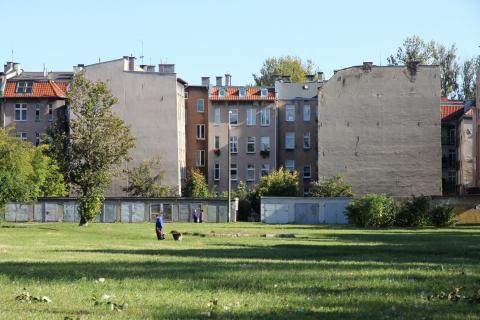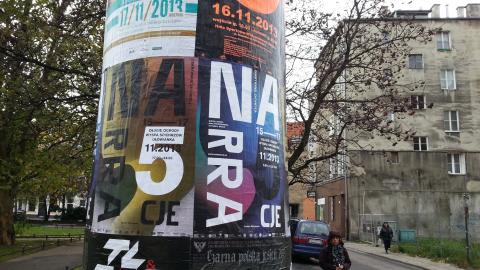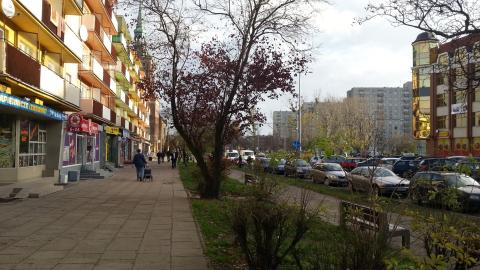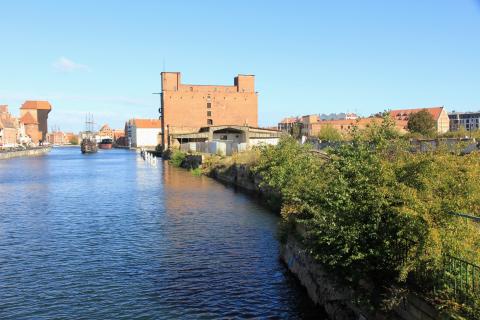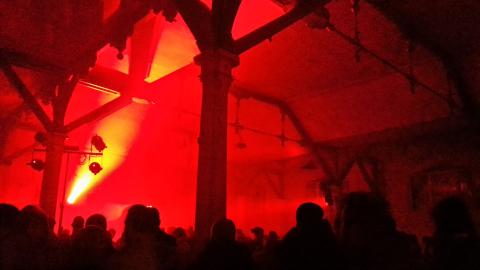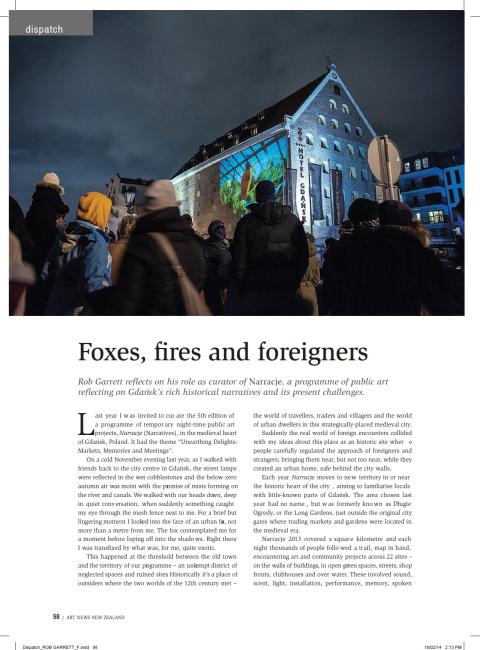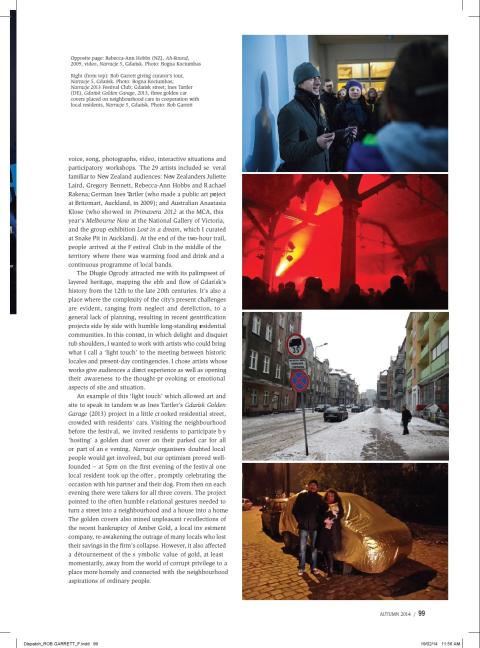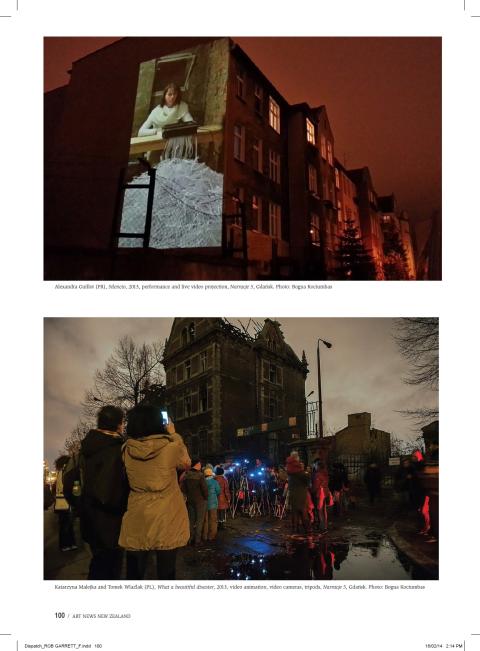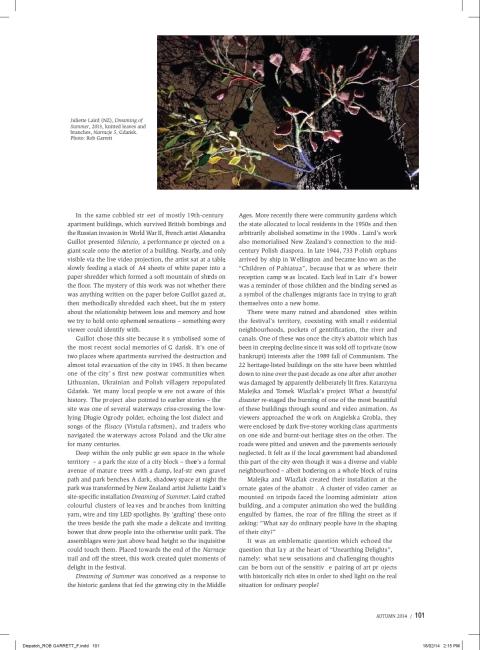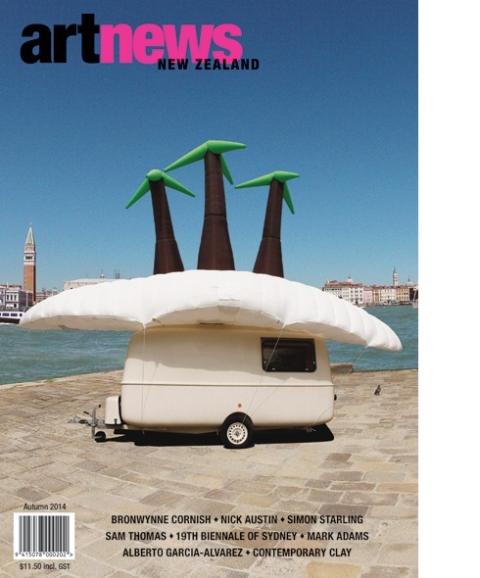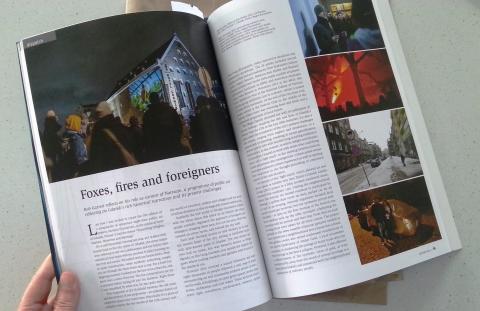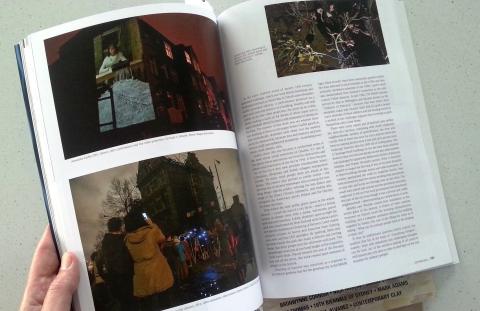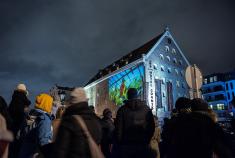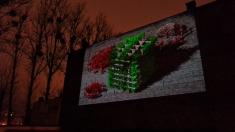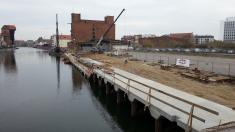Autumn in Gdańsk
Foxes, fires and foreigners
Rob Garrett reflects on his role as curator of “Unearthing Delights: Markets, Memories and Meetings”, the 5th edition of Narracje - Installations and Interventions in Public Space organised by Instytut Kultury Miejskiej (Gdańsk City Culture Institute) in partnership with Gdańskiej Galerii Miejskiej (Gdańsk City Gallery).
In November 2013 I curated the 5th edition of Narracje (Narratives), a programme of temporary night-time public art projects in Baltic coast city of Gdańsk, Poland.
The night before the festival opened, I was walking back to the town centre, the medieval heart of Gdańsk, with colleagues from the City Culture Institute. It was very early in the morning; the street lamps reflected their amber light off the wet cobblestones; and the below-zero autumn air was moist with the promise of mists forming on the river and canals. Our small group was walking heads down, deep in quiet conversation, when suddenly something caught my eye through the mesh fence next to me. At that moment I was standing precisely at the threshold between the old town and the territory of our programme; an unmade district of neglected spaces and ruined sites; historically a place of outsiders. This was the very place where the two worlds of the 12th century urban dwellers of met with the world of travellers, traders and villagers who were kept outside the city. We stood between the first historic city gates and the water markets, the hub of more than five centuries of trade. Right here I was suddenly transfixed by what was, for me, quite exotic. Suddenly the real world of foreign encounters collided with my ideas about this place as an historic site where people carefully regulated the approach of foreigners and strangers; bringing them near, but not too near, while they created an urban home behind the city walls. For a lingering but brief moment I was looking into the face of an urban fox, not more than one metre from me. The fox was also contemplating me for the same brief moment before loping off again into the shadows.
The annual festival “NARRACJE – Installations and Interventions in Public Space” organised since 2009 by Gdańsk City Culture Institute moves each year to a new territory in or near the historic heart of the city in order to familiarise locals with little-known parts of their city. In 2013 the territory was a district with no name, formerly known as Długie Ogrody, or the Long Gardens, an area immediately outside the original city gates where trading and gardening took place in an arrangement that was typical of city development in the medieval era. The mid-November autumn festival is staged over three to four nights between 5pm and midnight.
Gregory Bennett, “Apokalypolis I” 2013; photo by Rob Garrett.
NARRACJE 2013 was contained within a 1-kilometer square territory 1000s of people followed a trail, map in hand, to encounter art and community projects disbursed across 22 sites on building walls, open green spaces, streets, shop fronts, clubhouses and over water; and involving sound, scent, light, installation, performance, memory, spoken voice, song, photographs, video, interactive situations and participatory workshops. The 29 artists included several familiar to New Zealand audiences: New Zealanders Juliette Laird, Gregory Bennett, Rebecca Ann Hobbs and Rachael Rakena; German Ines Tartler who made a public art project at Britomart, Auckland in 2009; and Australian Anastasia Klose who showed in Primavera 2012 at the MCA, this year’s Melbourne Now at the NGV, and my group exhibition Lost in a dream at Snake Pit. At the end of the 2-hour trail, people would arrive, either in small groups of friends or as a part of one of the many guided tours, at the Festival Club in the middle of the territory for warming food and drink accompanied by a continuous programme of local bands.
Granary Island, November 2014 (where the fox was encountered); photo by Rob Garrett.
What attracted me to the Długie Ogrody territory was that it is a palimpsest of heritage traces which maps the ebb and flow of Gdańsk’s history from the 12th to the late 20th centuries. It is also a place where the complexity of the city’s contemporary situations are evident, from neglect, lack of planning and dereliction to high-end gentrification and the humble everyday of long-standing residential communities. In this context, in which delight and disquiet rub shoulders, I wanted to work with artists who could bring what I call a ‘light touch’ to the meeting between historic situations and present-day contingencies. Artists whose art works give audiences both a direct art experience as well as opening their awareness to thought-provoking or moving aspects of the site and its situation.
Images above: Ines Tartler, “Gdansk Golden Garage” 2013, photo by Rob Garrett (top); and overlooking Kanał Na Stępce towards the Ines Tartler and Alexandra Guillot sites; photo by Rob Garrett (bottom).
An example of the modest and unassuming manner which allowed the art and site to speak in tandem was Ines Tartler’s “Gdansk Golden Garage” 2013 project in the little crooked residential street of Pułkownika Jana Dziewanowskiego crowded with residents’ cars. Visiting the neighbourhood in the days prior to the festival that artist, her assistance and I invited residents to participate through their hosting a golden dust cover on their own parked car for all or part of the evening. NARRACJE organisers had been sceptical that local people world get involved; but our optimism and confidence proved well-founded, as, on the stroke of 5pm on the first evening of the festival one local resident took up the offer and promptly celebrated the occasion with his partner and their dog. From then each evening there were takers for all three covers. Knowingly the project pointed to the often humble relational gestures needed to turn a street into a neighbourhood and a house into a home. The golden covers also mined the unpleasant memories of many locals affected by the recent collapse of a local investment company Amber Gold. Though it re-awakened people’s memories of their outrage at the loss of their savings, it also affected a détournement of the symbolic value of gold, at least momentarily, away from the world of corrupt privilege to a place more homely and connected with the neighbourhood aspirations of ordinary people.
In the same cobbled street of largely 19th century apartment buildings; a street which had survived the devastation of British bombing and the Russian invasion of 1945; French artist Alexandra Guillot presented “Silencio”, a performance that was projected in giant scale onto the exterior of the building. Nearby and only visible via the live video projection, the artist sat behind a table, slowly, sheet-by-sheet, feeding a stack of A4 sheets of white paper into a paper shredder, all the while forming a soft mountain of shreds on the floor. The mystery of this work was not whether there was anything written on the paper before Guillot gazed at and shredded each sheet, slowly, methodically, one at a time; more it was the mystery that perhaps every viewer could identify with in wondering about the relationship between loss and memory; and how we try to hold onto ephemeral sensations.
The Guillot site was chosen because it symbolised some of the most recent social memories of Gdańsk. It is one of two places apartments that survived the destruction and almost total evacuation of the city in 1945; and therefore became one of the city’s first new communities when Lithuanian, Ukrainian and Polish villagers repopulated Gdańsk. Yet for many locals, this was something they were not aware of. More than this, Guillot’s project about loss and memory could point to even earlier stories. Prior to being reclaimed from the marshes and turned into a street at the end of the 19th century, it had been one of several waterways criss-crossing the Długie Ogrody polder that echoed to lost dialect and songs of the Flisacy, Vistula raftsmen, street traders, craftsmen and entertainers who navigated the waterways across Poland and the Ukraine, and who had occupied the site, for many centuries.
Alexandra Guillot, “Silencio” 2013; photo by Rob Garrett
Deep within the only truly public green space in the whole territory, a city-block wide park, there is a formal avenue of mature trees with a damp, leaf-strewn gravel path and a few park benches. On these dark autumn nights the park’s interior would have been formless silhouettes and deep shadows were it not for New Zealand artist Juliette Laird’s site-specific installation “Dreaming of summer”. Laird had crafted clusters of colourful leaves and branches out of knitting yarn, wire and tiny LED spot-lights. By grafting these onto the trees either side of the gravel path, just above head height, she made a delicate and inviting bower that drew people deeper into the otherwise unlit park. The assemblages were just within reach of the inquisitive who peered and touched to work the forms out. Placed towards the end of the NARRACJE trail and off the street, this site and art work created one of the quiet moments of delight in the festival, where people lingered and talked in hushed tones.
“Dreaming of summer” was conceived as a response to the location’s historic gardens that had fed the growing city from the Middle Ages; and more recently there had been community gardens here, allocated to local residents by the state in the mid-20th century and then arbitrarily abolished sometime in the 1990s. Laird’s work also memorialised New Zealand’s connection to the mid-century Polish diaspora. On November 2nd, 1944, 733 Polish orphans arrived by ship in Wellington and became famous as the “Children of Pahiatua”. Each leaf in the bower is a reminder of those children and the binding serves as a symbol of the challenges all migrants face in trying to graft themselves onto a new home.
Images above: Juliette Laird, “Dreaming of Summer” 2013, photo by Rob Garrett (top); and Katarzyna Malejka and Tomek Wlaźlak, “What a beautiful disaster” 2013; photo by Bogna Kociumbas (bottom)
Within the festival territory alongside small residential neighbourhoods, pockets of gentrification, the river and canals, there are many ruins and unused or abandoned sites. One of these is an extensive acreage of open space and heritage buildings that was once the city’s abattoir but that has been in pernicious decline since being sold off to private and now bankrupt interests after 1989. One consequence being that its original stock of 22 heritage listed buildings has been whittled down to nine over the past ten years as one building after another is rendered unsafe by apparently deliberate fires. Katarzyna Malejka and Tomek Wlaźlak’s project “What a beautiful disaster" re-staged the burning of one of the most beautiful of these buildings through sound and video animation. As people approached the work on Angielska Grobla they were enclosed by dark 5-storey working class apartment buildings on one side and burnt-out heritage sites on the other. The roads are pitted and uneven and the pavements seriously neglected. It feels like a part of the city that the local government has abandoned; yet it is a diverse and viable neighbourhood, albeit bordering on a whole block of ruins.
The artists created their installation at the ornate gates of the former abattoir. With a cluster of video cameras mounted on tripods facing one of the looming administration buildings of the former abattoir, Malejka and Wlaźlak presented a computer animation of the building engulfed by flame, the roar of fire filling the street as if asking “What say do ordinary people have in the shaping of their city?” In the end it was an emblematic question; consistent with the question that lay at the heart of “Unearthing Delights”, namely: what new sensations and challenging thoughts can be born out of the sensitive pairing of art projects with historically rich sites in order to shed light on the real situation for ordinary people?
Images above: Mariana Seredyńskiego, January 2013, photo by Rob Garrett (top); and park on Świętej Barbary, January 2013, site Juliette Laird’s project and former site of community gardens, photo by Rob Garrett (bottom).
Images above: Remnant of Baroque palace garden wall, photo by Rob Garrett (top); warehouse of old butchery, photo by Instytut Kultury Miejskiej (2nd from top); Rob Garrett giving curator’s tour, photo by Bogna Kociumbas (2nd from bottom); and N5 audience members, photo by Bogna Kociumbas (bottom).
Images above: Apartments, garages and park on Krowoderska Street; photo by Instytut Kultury Miejskiej (top); Narracje 5 posters, photo by Rob Garrett (middle); and Długie Ogrody Street, photo by Rob Garrett (bottom).
Images above: Granary Island, summer 2012; photo by Instytut Kultury Miejskiej (top); and N5 Festival Club, November 2013, photo by Rob Garrett (bottom).
Read more about the artists' projects here...
Article originally published as “Foxes, fires and foreigners” in Art News New Zealand, Autumn, 2014; pp98-101. View the original magazine pages below:
